The good news is that in these unusually fraught times our bush and heathlands are delightful places to socially distance oneself…we are so lucky!
The bad news is that there is not much in flower at the moment, and plants may require close inspection to reveal their treasures.
One exception is the bright colour of the massed tubular flowers of, Common Heath, Epacris impressa, with colours varying from pale to bright pink, and also white. The pale-pink version, called Pink Heath, is our state emblem. Individual plants can be found in flower almost any time of year but are much more common from now until spring. When not in flower their spiky leaves have tricked many a plant-lover when trying to identify them.
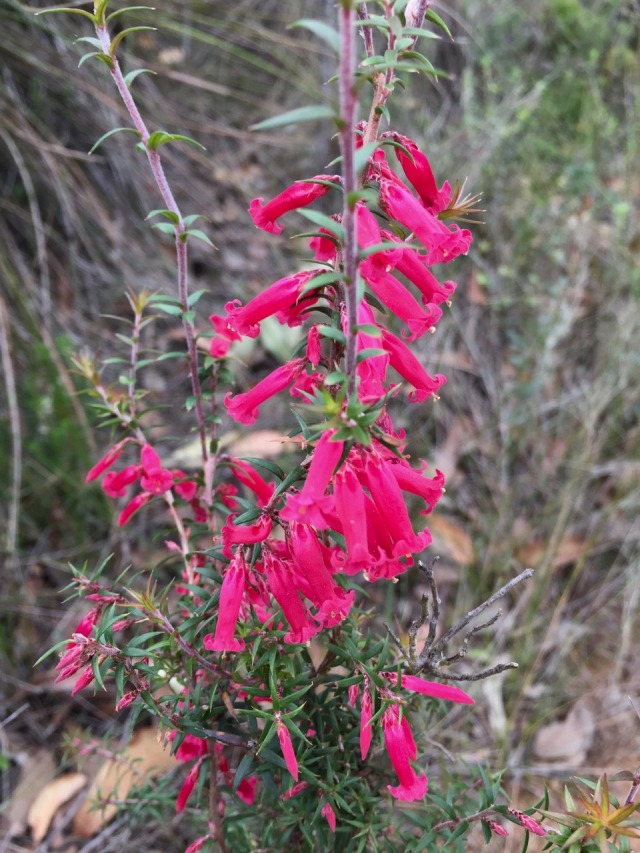 Common Heath
Common Heath
Another colourful plant to look out for is the long-lasting mauve-pink flowers of Paper Flower, Thomasia petalocalyx. There are many bushes at the Allen Noble Sanctuary, and I find its demure, drooping flowers always a pleasure to see, with the soft, hairy, greyish leaves worth feeling.
 Paper Flower
Paper Flower
On the March nature ramble in the Ironbark Basin we saw many examples of the tiny flowers of Prickly Broom-heath, Monotoca scoparia. These white flowers are obvious only by their massed nature. However, they are worth a close look, as doing so will reveal that they are dioecious—the male and female flowers are on separate bushes. The female flowers have a green central ovary, while the males have several orange-tan stamens.
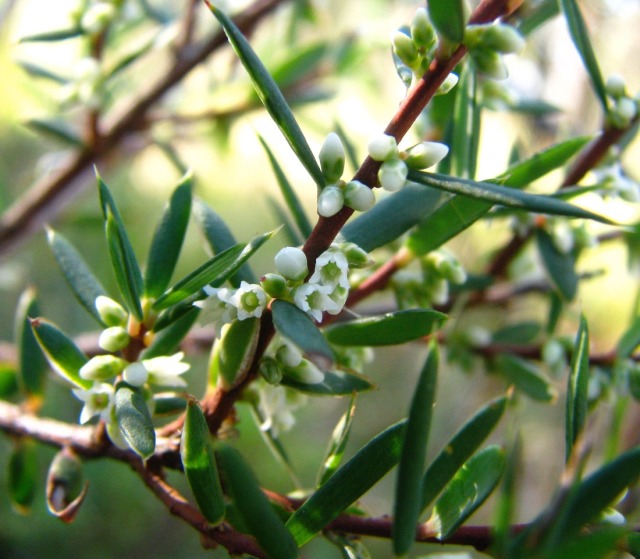 Prickly Broom-heath – female
Prickly Broom-heath – female
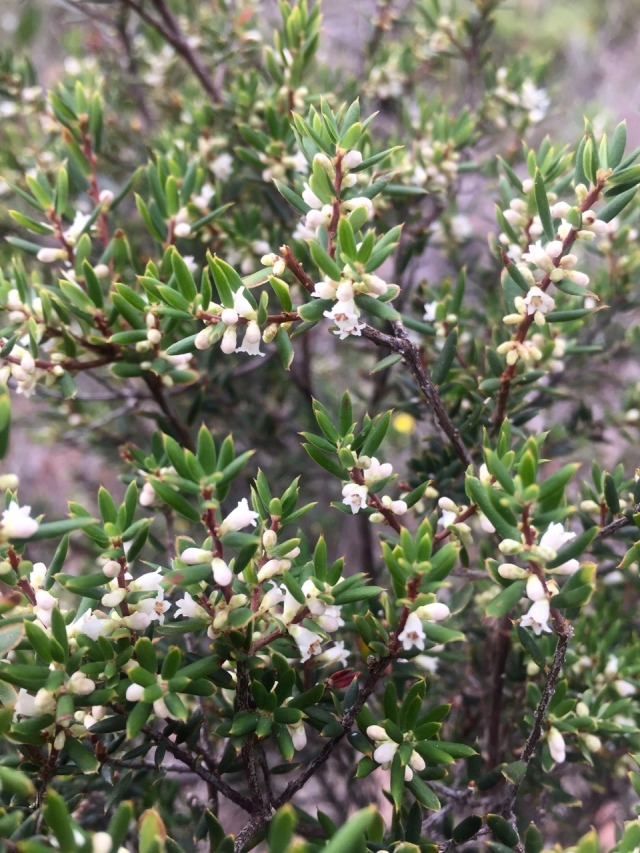 Prickly Broom-heath – male
Prickly Broom-heath – male
When walking along the pathway up the hill from where Ted’s Track crosses Snakey GullyTrack, I always stop to carefully check out the flowers on the many bushes of this plant.
On coastal pathways look out for White Correa, Correa alba var. alba displaying white flowers with four spreading petals. This dense, hardy plant with grey-green oval leaves has been in flower for some time and is a useful and easy-to-grow garden plant.
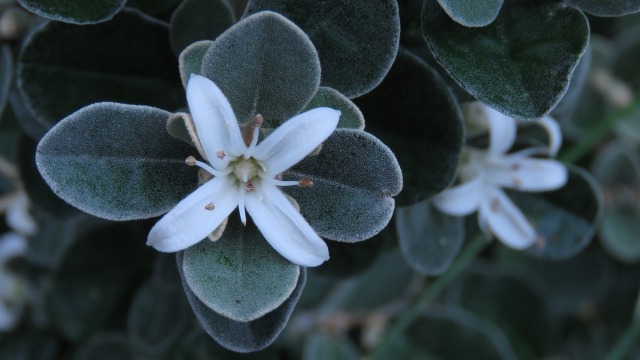 White Correa
White Correa
Along our waterways, such as the banks of the Painkalac Creek, I am enjoying the swaying, feathery, silky flowerheads of Common Reed, Phragmites australis. This hardy bamboo-like, semi-aquatic plant tolerates high salinity, waterlogging and acid sulphate soils, and is native to many parts of the world. It was extensively used by Aborigines for spear shafts, necklaces, bags and baskets. I found four Aboriginal names for it: Dharrill, Kaerk, Tarrk, and Charkoon.
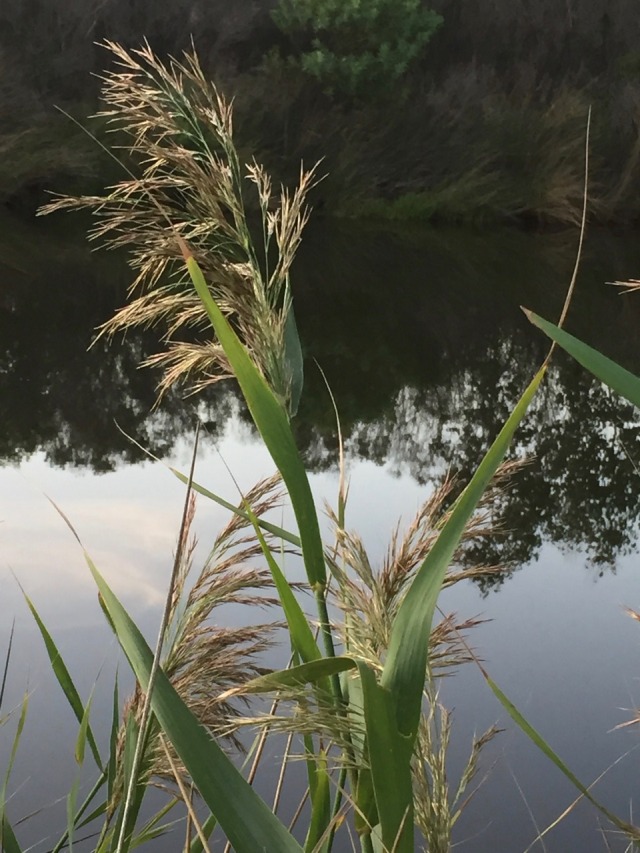 Common Reed
Common Reed
Autumn is a good time to look for fruits on many plants, such as the very hardy Nodding Saltbush, Einadia nutans subsp. nutans. This is self-seeding all over my garden with its trailing slender branches of semi-succulent arrow-shaped leaves. Currently its tiny, bright-red succulent fruits provide spots of red amongst the prevailing greenery. Despite their massed nature in my garden I have never noticed the flowers which books describe as ‘insignificant’…yes indeed! Maybe I will see them next year!
 Nodding Saltbush
Nodding Saltbush
Keep a look out and maybe a ‘treasure’ will appear on your solitary walks.
Ellinor Campbell